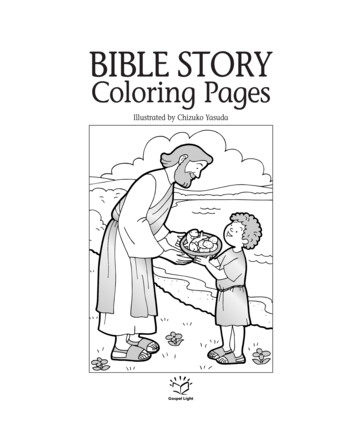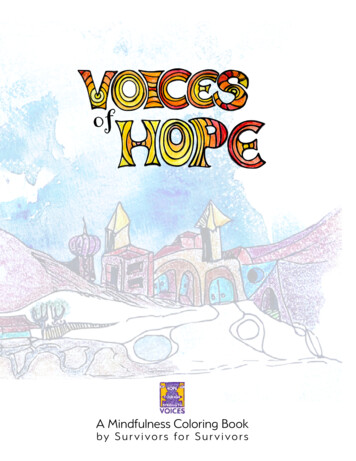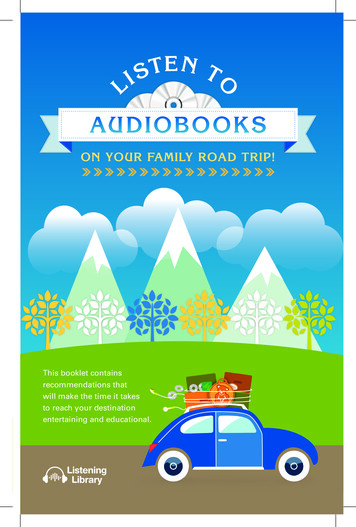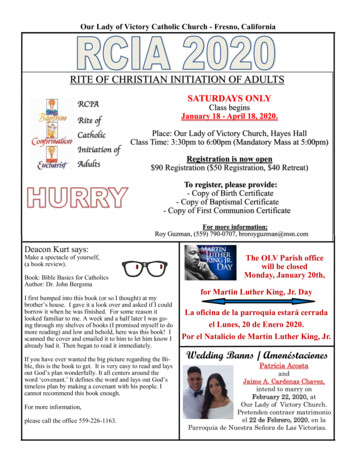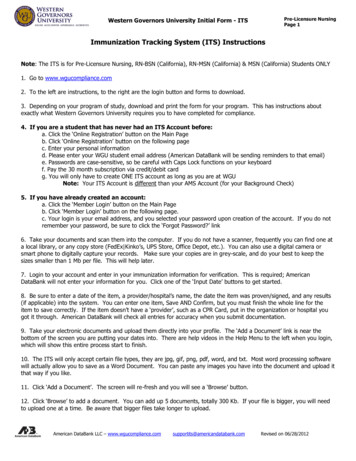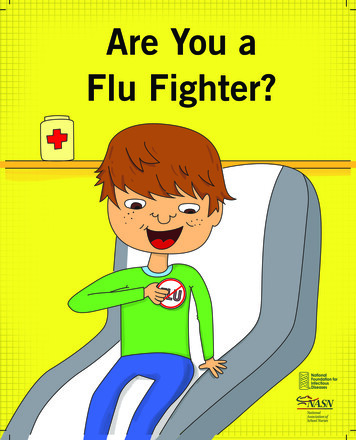
Transcription
Meet Freddie.Freddie likes to play soccer.
One day on the school bus, Freddiefelt sick. He used his arm tocover a BIG cough.Cough!
At school, Freddie felt worse. Hewas hot and then cold. He hadchills. He was very, very tired andall he wanted to do was sleep.
Freddie’s teacher sent himto the school nurse.
Freddie told the nurse, "I feel so tired.My body hurts all over."She asked Freddie if he had a fluvaccine this year. He had not.SUDDENSYMPTOMSSEVERE, COMES ONWITHOUT WARNINGFEVER100O OR GREATERACHESUNEXPLAINEDTIREDNESSUNEXPLAINED, EXTREMECHILLSThe nurse called his mom andsuggested she take him to the doctorto see if he had the flu.
The doctor said, "Freddie you havethe flu. I can give you a medicineto help fight it."
Once he got home, his mom gavehim the medicine, chicken soup,and lots of water to drink.
When Freddie was better he wentback to school and told his friendshow to fight the flu. Freddie is a
Here's what Freddie learnedfrom having the flu.1Get a flu vaccineevery year.2Wash your handsand cover yourcough.3See a Doctorwhen you haveflu symptoms.FLUCough!
How does the flu make you feel?I feel:Draw a picture of how the flu makes you feel:
How might you catchthe flu?Flu spreads in the air when youcough or sneeze. It also lives onthings like books or toys.
Parent Discussion GuideDistinguishing Flu vs. ColdInfluenza (or flu) is different from a cold.1 Both a cold and the flu are respiratory illnesses, yet they are caused by different types of viruseswith different symptoms.1 The flu usually comes on suddenly.1 To recognize flu symptoms, remember Flu F.A.C.T.S. (Fever, Aches, Chills,Tiredness, and Sudden onset).2 Children can have additional flu symptoms that are rare in adults, including vomiting and diarrhea.1Flu Facts Children are two to three times more likely than adults to get sick with the flu. Children can pass the flu virus to others for a period of more than seven days after symptoms start. On average, one-third of family members in families with school-age children are infected with the flu each year.343Typically, influenza affects five to 20 percent of the U.S. population each year.5 While the flu season is unpredictable, the U.S. Centersfor Disease Control and Prevention (CDC) notes that the flu can peak anytime between November and March.5Flu TransmissionSchools are a prime location for the flu virus to attack and spread.3 It can be challenging to prevent children from getting the flu duringthe school year because:Flu is a respiratory illness1Flu viruses are spread mainly by respiratory droplets from coughing, sneezing and talking4Droplets can spread to others up to about six feet away and may land in the mouths or noses of people who are nearby or possibly beinhaled into the lungs4Less often, a person may get the flu by touching a surface or object that has flu virus on it and then touching their own mouth or nose4 Preventing the Flu1) Vaccination is the cornerstone of flu prevention. The CDC recommends that everyone 6 months and older get a flu vaccine.62) Good hygiene habits help control spread of the flu virus. Teach your child these tips to help prevent the spread of flu virus:6a. Cover your coughs and sneezes with the inside of your elbow or a tissueb. Wash your hands with soap and waterc. Avoid touching your eyes, nose and mouth – germs spread this way3) Antiviral flu medicines prescribed by a doctor attack the flu virus and may be an important adjunct to vaccination for fluprevention and control. 6,7What to Do if Your Child Gets the FluEven with preventative measures, sometimes you or your child may still get the flu. If your child has flu symptoms, schedule an appointment with your pediatrician. Your pediatrician may prescribe an antiviral flu medicine that attacks the flu virus.6Antivirals may be animportant adjunct to vaccination for flu prevention and control.7If your child gets the flu, it’s important that they spend time resting. Keep your child at home for at least 24 hours after his or her feveris gone.8CDC. Seasonal Influenza (Flu). Flu Symptoms & Severity. http://www.cdc.gov/flu/about/disease/symptoms.htm (August 27, 2013)Chart adapted from National Institute of Allergy and Infectious Diseases “Is It a Cold or the .pdf (August 27, 2013)3NIAID. Flu (Influenza). lu/Pages/definitionsOverview.aspx (August 27, 2013)4CDC. Seasonal Influenza (Flu). How Flu Spreads. http://www.cdc.gov/flu/about/idsease/spread.htm (August 27, 2013)5CDC. Seasonal Influenza (Flu) Q&A. http://www.cdc.gov/flu/about/qa/disease.htm (August 27, 2013)6CDC. CDC Says “Take 3” Actions To Fight The Flu. http://www.cdc.gov/flu/protect/preventing.htm (August 27, 2013)7CDC. “Influenza Antiviral Medications: A Summary for Clinicians” mmary-clinicians.htm(August 27, 2013)8CDC. The Flu: A Guide for Parents. luguideparents brochure.pdf (August 27, 2013)12
Resources for Additional za.orgwww.FluFACTS.comImportant DisclaimerThe information in Are You A Flu Fighter? is for educational purposes only and should not be considered tobe medical advice. It is not meant to replace consultation with your physician.Are You A Flu Fighter? is supported by Genentech, a member of the Roche Group. To learn more or to download additional copies of the coloring book in English or Spanish, visit www.FluFACTS.com.
Parent Discussion Guide Distinguishing Flu vs. Cold Influenza (or flu) is different from a cold.1 Both a cold and the flu are respiratory illnesses, yet they are caused by different types of viruses with different symptoms.1 The flu usually comes on suddenly.1 To recognize flu symptoms, remember Flu F.A.C.T.S. (Fever, Ach
